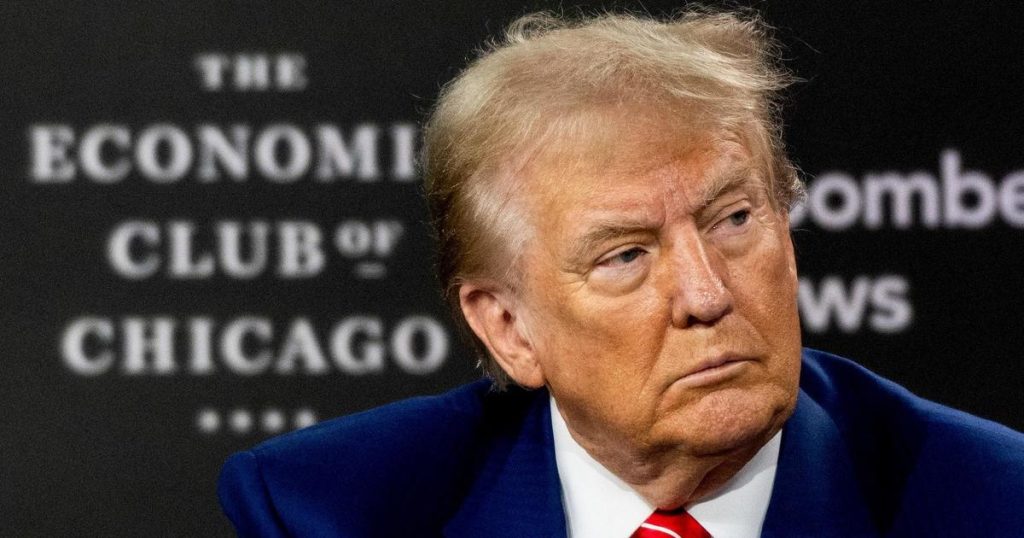In a recent interview, former President Donald Trump, who turned 78 in June, addressed questions about his age and fitness for office, considering he would be the oldest person in U.S. history to be elected president if he wins in November. Responding to a query on whether he would appoint a CEO his own age, Trump expressed that he would with some conditions, acknowledging that there are individuals in their 80s who are still capable and competent to lead companies. Despite his hesitations, Trump stated that he would not appoint President Joe Biden, aged 81, due to personal reasons. These remarks were made during an interview with Bloomberg editor-in-chief John Micklethwait at the Economic Club of Chicago.
While Trump considers individuals in their 80s who are still involved in family companies or at the helm of large corporations, there are only a few CEOs of major U.S. companies who are as old or older than him. Among the Fortune 500 companies, which are the largest in the nation based on revenue, only six CEOs are older than Trump. These individuals include Warren Buffett of Berkshire Hathaway, aged 94, and Roger Penske of Penske Automotive, aged 87, among others. Research from the financial firm Madison Trust indicates that most CEOs of publicly traded companies are in their 50s, with only a small percentage being over 60 years old. This demographic trend reflects the prevailing age of leadership in the business world.
In response to concerns about his age, Trump cited historical examples of world leaders who were in their 80s and still accomplished great feats. With regards to disclosing details about his physical or mental well-being, Trump has chosen not to follow the tradition of releasing his health records. Contrary to his approach, Vice President Kamala Harris released her records, affirming her excellent health and ability to serve as president. While there is no legal requirement for candidates to disclose their health data, it is a common practice for presidential nominees to provide transparency on their well-being, especially given the demands of the office and concerns about their age.
The workforce landscape in America is evolving, with more individuals working past the age of 75 than ever before. Data from the Labor Department shows a growing number of people over 75 are remaining in the workforce, with about 1 in 12 in 2022 still employed compared to 1 in 20 two decades earlier. Some older workers choose to continue working because they enjoy their jobs, while others do so out of financial necessity. For Trump, who is estimated to be worth $5.6 billion, financial considerations are not a factor in deciding whether to retire. This shift in the working population highlights changing attitudes towards retirement and the economic realities faced by aging Americans.
The questions surrounding age and leadership in the political and corporate spheres continue to generate discussion and debate. While Trump remains a divisive figure, his age and potential presidency raise valid concerns about his ability to lead effectively. As the election approaches, voters will have to consider various factors, including the candidates’ health, experience, and policies, in making their decision. The evolving demographics of the workforce also underscore the need for companies and policymakers to adapt to changing trends and support older workers in their desire to remain employed or transition into retirement with financial security. In a rapidly changing world, the intersection of age, leadership, and work presents complex challenges that require thoughtful consideration and proactive solutions.


